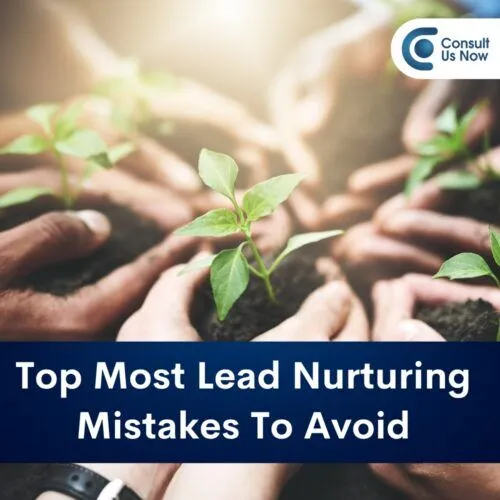Common Lead Nurturing Mistakes

Introduction
Are you tired of seeing your lead generation efforts fall flat? Do you want to turn your prospects into loyal customers? Look no further than effective lead nurturing! But be warned – there are several common mistakes that can hold you back from achieving success.
Don’t worry – we’ve got your back! As a leading digital marketing agency, we have extensive experience in developing and implementing successful lead nurturing strategies. In this blog, we’re sharing our top tips to help you avoid these mistakes and generate better results for your business.
By segmenting your audience, personalizing your messages, sending the right number of communications, considering the buyer’s journey, testing and refining your strategy, integrating lead nurturing with other marketing efforts, and measuring and tracking your success, you can achieve the outcomes you desire.
Don’t let these common mistakes stand in the way of your success. Contact us today to learn more about how we can help you develop and implement effective lead nurturing strategies that drive results and grow your business.
Ready to take the first step?
Segment Your Audience
Segmenting your audience is crucial for tailoring your messaging and content to each individual lead. This personalization helps to increase engagement and conversion rates. By grouping your leads based on demographics, behavior, and interests, you can create targeted campaigns that resonate with each group.
- Start with your data: Use the data you have on hand, such as demographics, behavior, and engagement, to create different groups or segments.
- Focus on similarities: Identify the common characteristics or behaviors that your leads share to form distinct segments. For example, you may segment based on location, industry, job title, or product interest.
- Keep it simple: Don’t over-segment your audience. Try to keep the number of segments manageable and avoid creating too many micro-segments.
- Use automation tools: Use marketing automation tools to help you segment your leads based on their behavior, such as the pages they’ve visited or the forms they’ve filled out.
- HubSpot: HubSpot offers a variety of marketing automation tools that allow you to segment your audience based on behavior, demographics, and other criteria.
- Marketo: Marketo is another popular marketing automation tool that enables you to create segments based on a wide range of criteria, such as lead source, location, and behavior.
- Pardot: Pardot is a Salesforce product that allows you to segment your audience based on a variety of criteria, such as industry, job title, and product interest.
- Active Campaign: Active Campaign is a marketing automation platform that offers advanced segmentation capabilities, including the ability to create segments based on engagement levels and behavior.
- Mailchimp: Mailchimp is a popular email marketing platform that includes segmentation tools that enable you to create groups based on a variety of criteria, such as subscriber engagement and behavior.
Refine over time: Continuously review and refine your segments over time based on new data and feedback to ensure they remain relevant and effective.
Personalize Your Messages
- Use the lead’s name: Including the lead’s name in your emails and other communications is a simple but effective way to personalize your message and make them feel valued.
- Reference their specific interests: If a lead has shown interest in a particular product or service, make sure to reference it in your communications with them. For example, you could send them targeted content related to that product or service, or invite them to a webinar or event that focuses on it.
- Acknowledge their pain points: Show that you understand the challenges that your leads are facing and offer solutions that can help address those pain points. For example, if your lead has expressed frustration with a particular aspect of their business, provide content that speaks directly to that issue.
- Use relevant data and insights: Use the data you have on each lead, such as their website activity, previous purchases, or social media engagement, to craft personalized messages that speak directly to their needs and interests.
- Offer tailored promotions: Create special offers or promotions that are targeted to each lead’s specific needs or interests. For example, you could offer a discount on a product or service that the lead has expressed interest in, or provide a free trial of a software tool that they might find valuable.
Send the Right Number of Communications
- Avoid bombarding your leads with too many communications in a short period of time. This can be overwhelming and make them feel like they are being spammed. Instead, space out your communications and provide value with each one.
- Keep in mind the frequency that your target audience is comfortable with. Some audiences may prefer to receive daily communications, while others may prefer weekly or monthly updates.
- Tailor your communication frequency to the stage of the buyer’s journey that your leads are in. For example, leads in the early stages of the journey may need more frequent communications to build awareness and establish trust, while leads in the later stages may prefer more targeted and personalized communications.
- Monitor your engagement rates to determine if you are sending too many or too few communications. If you see a high unsubscribe rate or low open and click-through rates, it may be a sign that you need to adjust your communication frequency.

